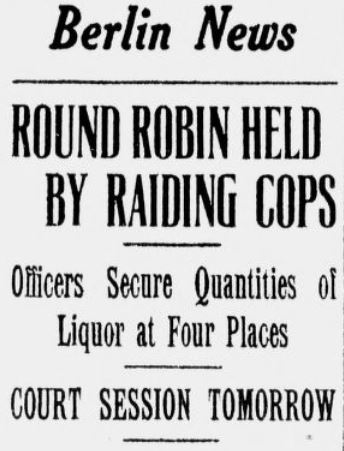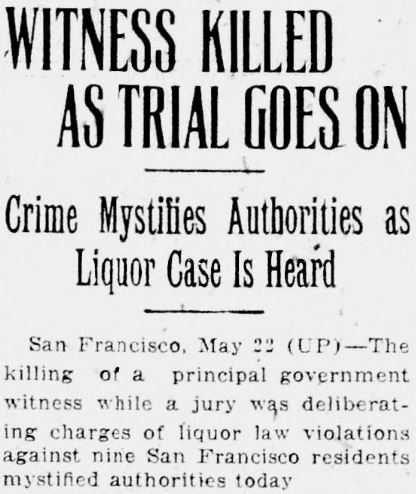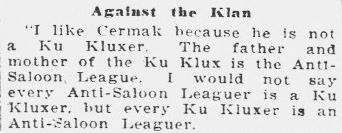Prohibition in the United States: A 100-Year Retrospective – Enforcement: Legal and Otherwise
Prohibition in the United States: A 100-Year Retrospective is a 5-part blog series offering readers an overview of the history of drug prohibition in the United States using historical newspapers and two of the nation’s most widely used psychoactive drugs – alcohol and marijuana. Part 4, “Enforcement: Legal and Otherwise,” compares the legal and vigilante drug enforcement of the Prohibition era with the inconsistent approaches of legal drug enforcement of the modern day.
Enforcement: Legal and Otherwise
We knew we couldn’t make it illegal to be either against the war or black, but by getting the public to associate the hippies with marijuana and blacks with heroin, and then criminalizing both heavily, we could disrupt those communities. […] Did we know we were lying about the drugs? Of course we did.
John Ehrlichman, former White House Counsel to Richard Nixon
Enforcement of alcohol prohibition was inconsistent to say the least, and enforcement of marijuana prohibition is inconsistent now. Throughlines of ethnic and economic discrimination have affected both prohibition eras, as alcohol became associated with immigrants, Catholics, and Black people in the 1920s, and marijuana became associated with poor people and people of color through the zeitgeist of the 20th century.
Racial bias in arrests for marijuana is well-documented. According to a 2020 report by the American Civil Liberties Union (ACLU), Black people are more likely than white people to be arrested for possession of marijuana in every state, including in states where marijuana has been legalized or decriminalized. Arrests for marijuana outnumber arrests for all violent crimes combined, making up 43.2% of all drug arrests, of which 89.6% are for possession.
Our glamorous modern picture of the roaring ‘20s is sufficient only for understanding upper-class drinkers in cities who could afford good liquor and participation in speakeasies. For them, the 1920s represented a similar rebellion against authority that the 1960s afforded rich young whites, and few others.
Legal enforcement of Prohibition fell under the Volstead Act and was carried out by U.S. Marshals working in conjunction with the Postal Service, the FBI, the IRS, and U.S. Customs. Because the illegal liquor trade was primarily the purview of organized crime syndicates, and wages for U.S. Marshals were relatively low (adjusted for inflation, approximately $25,000 annually), Prohibition enforcement agents were bribed generously to look the other way. In fact, enforcement jobs were always in high demand despite their low pay because these bribes were an open secret, and applicants knew they could earn the modern equivalent of a six-figure salary under the table. The Untouchables, special agents tasked with taking down Al Capone in the early ‘30s, became famous because they could not be bribed by the Chicago mafia.
For poor people, immigrants, and Black people, on the other hand, possession of alcohol and paraphernalia often led to arrests or much worse, including violent encounters with the burgeoning Ku Klux Klan (KKK). The KKK, which preached anti-immigrant, anti-Catholic, and anti-Black sentiment, grew to between 2 and 5 million in number between 1920 and 1925, the height of its membership. The KKK leveraged the idea that the drinking habits of immigrants were leading to the moral degradation of the country, and pointed to the rise in crime under Prohibition and insufficient government enforcement to recruit new members. By 1925, the Klan’s commitment to vigilante prohibition enforcement had so connected their cause with the mainstream Anti-Saloon League (ASL) that Clarence Darrow commented:
During the Prohibition era, the ASL’s lobbying power and the Klan’s commitment to dry Protestantism made way for the promotion of Klan interests in political life, and several Klan members were elected to public office, including 16 U.S. Senators. In 1924, Hiram Wesley Evans, the KKK’s Imperial Wizard from 1922-1939, said: “The Klan functions along the same lines as the Anti-Saloon League…by persistently supporting men of certain types and beliefs.” In 1929, he boasted that the Klan’s influence was “even greater than that of the Anti-Saloon League,” and suggested that they had “completed a reorganization and revivification of the dry forces of the nation.”



